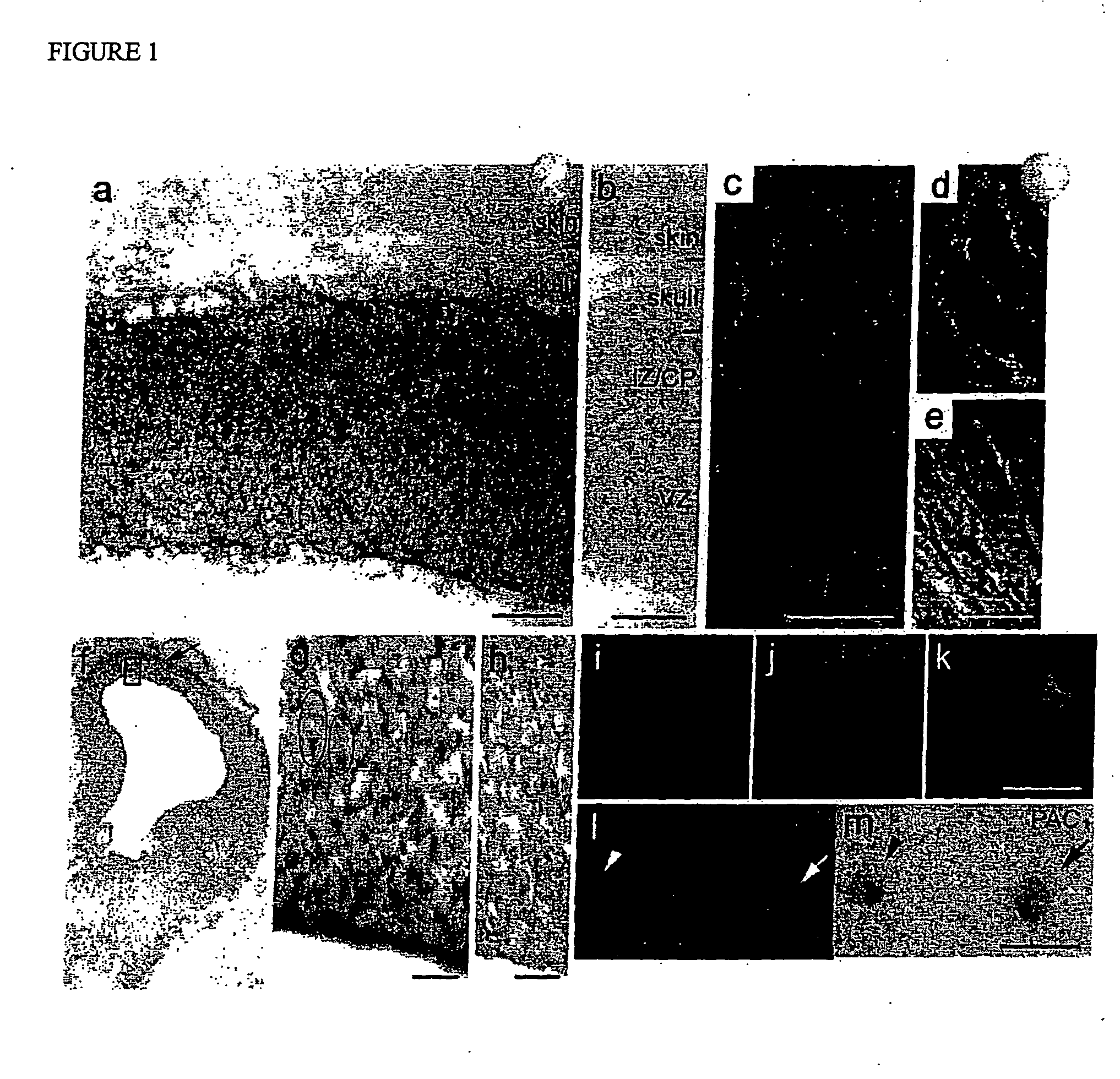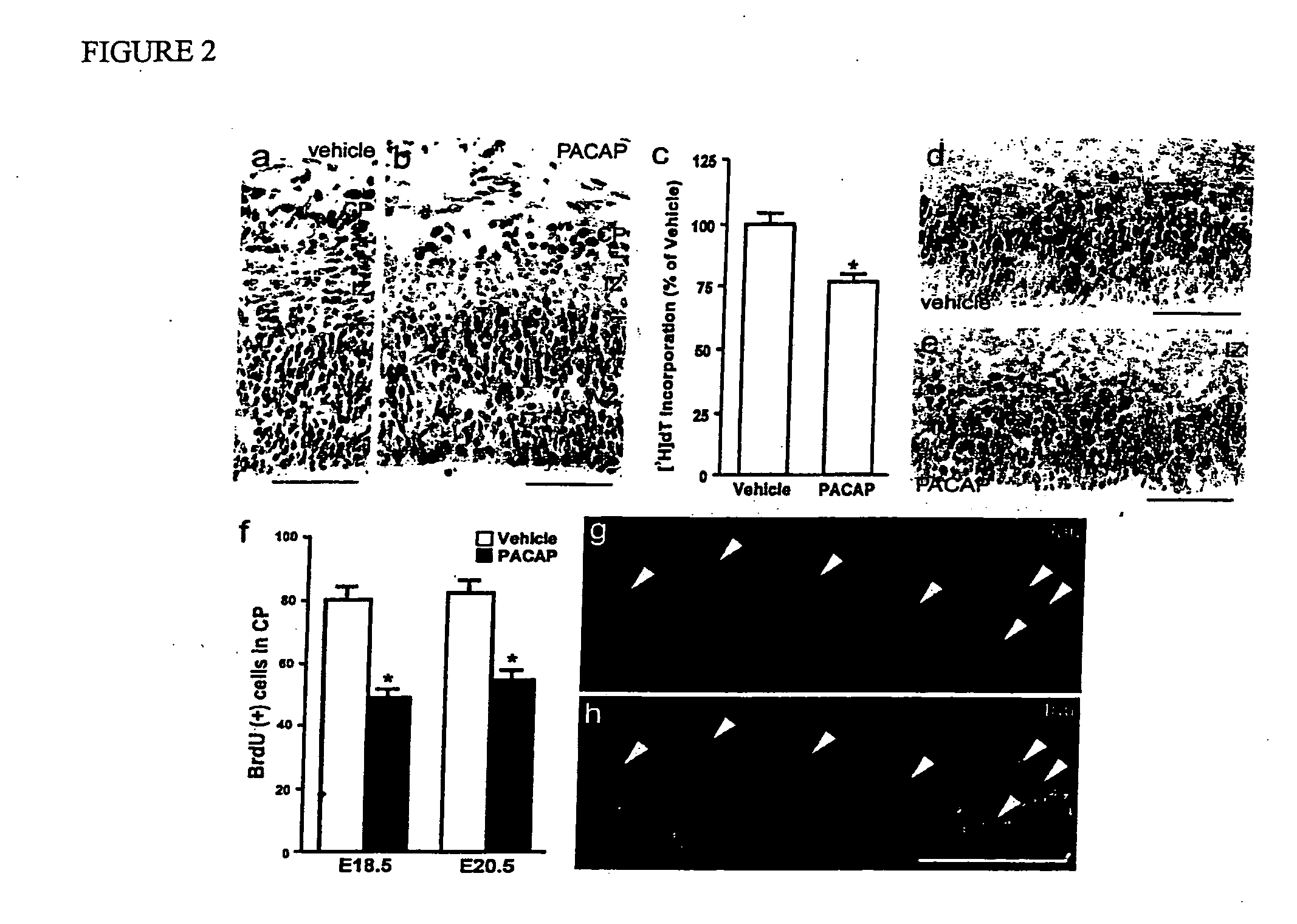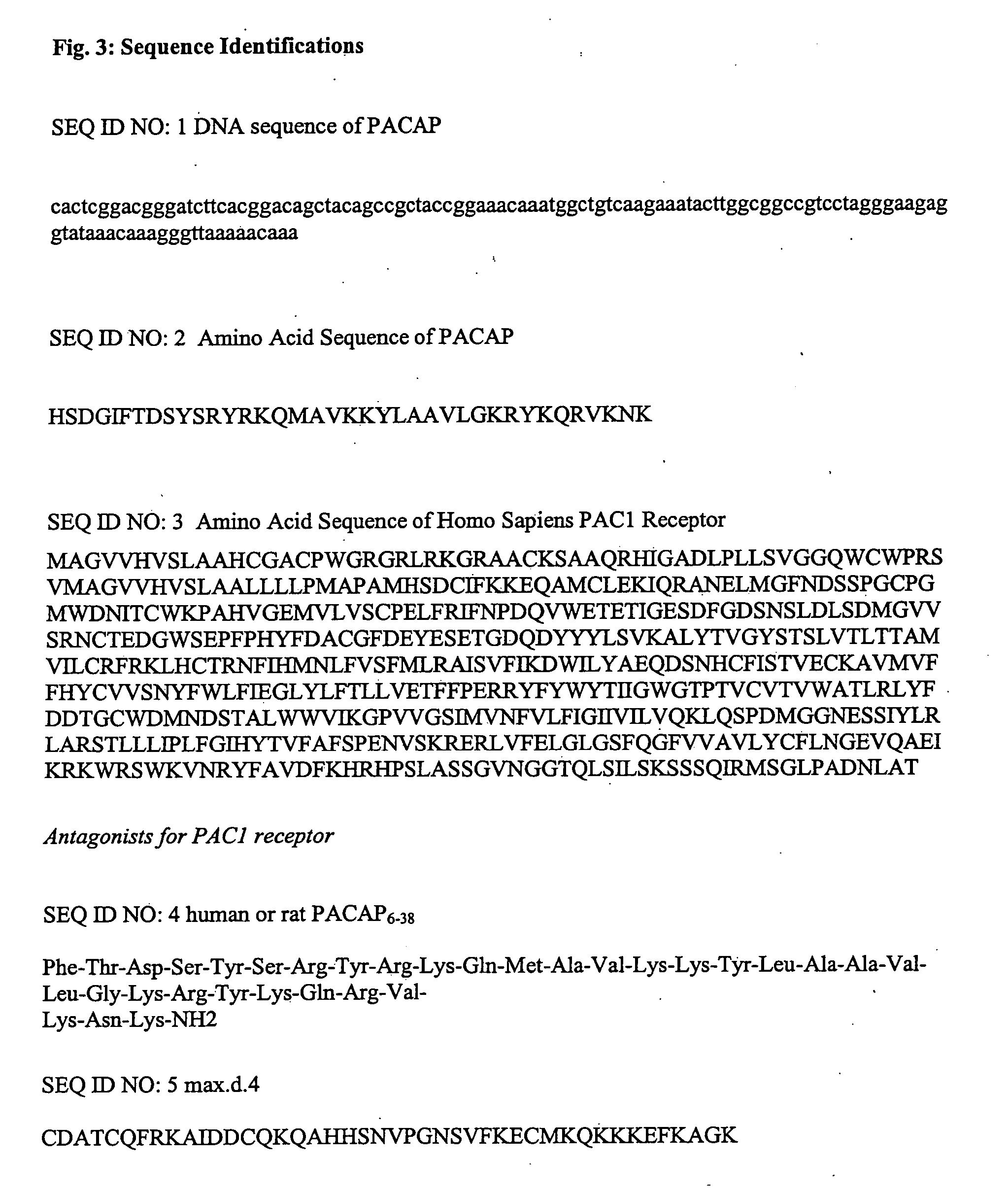Pituitary adenylate cyclase-activating polypeptide (PACAP) is an anti-mitogenic signal for selected neuronal precursors in vivo
a technology of adenylate cyclase and a polypeptide, which is applied in the field of developmental and regenerative neurology, can solve the problems of serious or even deadly diseases affecting the cerebral cortex, the ontogenetic functions relating to the pacap ligand/receptor system in the cortex of the living embryo remain undefined, and achieve the effect of promoting the proliferation of manipulating cells
- Summary
- Abstract
- Description
- Claims
- Application Information
AI Technical Summary
Benefits of technology
Problems solved by technology
Method used
Image
Examples
example 1
PACAP Effect on Cerebral Cortical Precursors In Vivo
[0072] To define functions in vivo, potentially responsive precursors were identified in Embryonic Day 15.5 (E15.5) rat using in situ hybridization and immunohistochemistry for PAC1 receptor. The following methods were used:
[0073] In situ hybridization. Fresh frozen E15.5 Sprague-Dawley rat embryonic heads were sectioned at 15 μm coronally. Forty two-mer oligodeoxynucleotide probes containing the C-terminal region of PAC1, complementary to 1342-1383 bp, were 3′-end-labeled using digoxygenin (DIG)-UTP, yielding tail lengths of ˜10 DIG-UTP. After overnight hybridization at 40° C., slides were sequentially rinsed twice for 30 min at 40° C. in 2×SSC / 0.02% SDS, 1×SSC, 0.2×SSC and 0.1×SSC. Staining using NBT and X-phosphate was done according to manufacturer's instructions (Roche Molecular Biochemicals, Indianapolis, Ind.). A standard competition strategy, 50-fold excess unlabeled probe, was used as hybridization control. In addition, d...
example 2
PACAP Proliferation in Cerebral Cortical Precursors
[0083] To define relationships to proliferation, acutely dissociated precursors with mitotic S-phase marker, bromodeoxyuridine (BrdU), were labeled and double immunocytochemistry was performed. Of precursors in S-phase, representing 25±1.5% of the population (Lu, N 1997), over 95% expressed PACAP and PAC1, receptor (FIG. 1 i-m), because peptide signaling influences proliferation in vivo. FIGS. 1 i-k show the co-localization of BrdU and PACAP, with Texas Red (FIG. 1i), PACAP with FITC (FIG. 1j) and a combined image (FIG. 1k). FIGS. 11-m show co-localization of BrdU and the PAC1 receptor. FIG. 11 is a visualization of BrdU with FITC and PAC1. FIG. 1m is a visualization with a DAB reaction, with the arrow indicating the BrdU(+) / PAC1(+) cell and the arrowhead indicating BrdU(−) / PAC1(±) cell. (Bar=10 μm). Furthermore, PACAP expression by single precursors corroborates previous evidence of mRNA and protein in cortical tissue population (L...
example 3
PACAP Function in Embryos
[0084] To define functions in embryos, PACAP (10−5M) was administered by transuterine intracerebroventricular injection (ICV) into lateral ventricles of E15.5 rat brains. The experiments determined that intraventricular PACAP inhibits precursor mitosis and neurogenesis without enhancing cell death (FIG. 2). As PAC1 is expressed broadly, responsive cells were analyzed by nuclear P-CREB immunoreactivity, a downstream signaling pathway defined in vitro population (Lu, N 1997). Five minutes after PACAP injection, P-CREB signal was observed in many nuclei in the VZ nuclei (FIG. 2b), but not in the vehicle-treated IZ nuclei (FIG. 2a), indicating that a subset of VZ precursors express rapidly responsive PAC1, receptors. This signal was brief, however, no longer detected after 30 minutes (not shown). In both vehicles (FIG. 2a) and PACAP treated samples, P-CREB signals were present in the CP. Four hours later, DNA synthesis, measured by assaying [3H]thymidine ([3H]dT...
PUM
| Property | Measurement | Unit |
|---|---|---|
| size | aaaaa | aaaaa |
| affinity | aaaaa | aaaaa |
| physiological pH | aaaaa | aaaaa |
Abstract
Description
Claims
Application Information
 Login to View More
Login to View More - R&D
- Intellectual Property
- Life Sciences
- Materials
- Tech Scout
- Unparalleled Data Quality
- Higher Quality Content
- 60% Fewer Hallucinations
Browse by: Latest US Patents, China's latest patents, Technical Efficacy Thesaurus, Application Domain, Technology Topic, Popular Technical Reports.
© 2025 PatSnap. All rights reserved.Legal|Privacy policy|Modern Slavery Act Transparency Statement|Sitemap|About US| Contact US: help@patsnap.com



